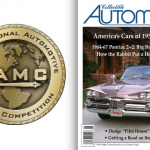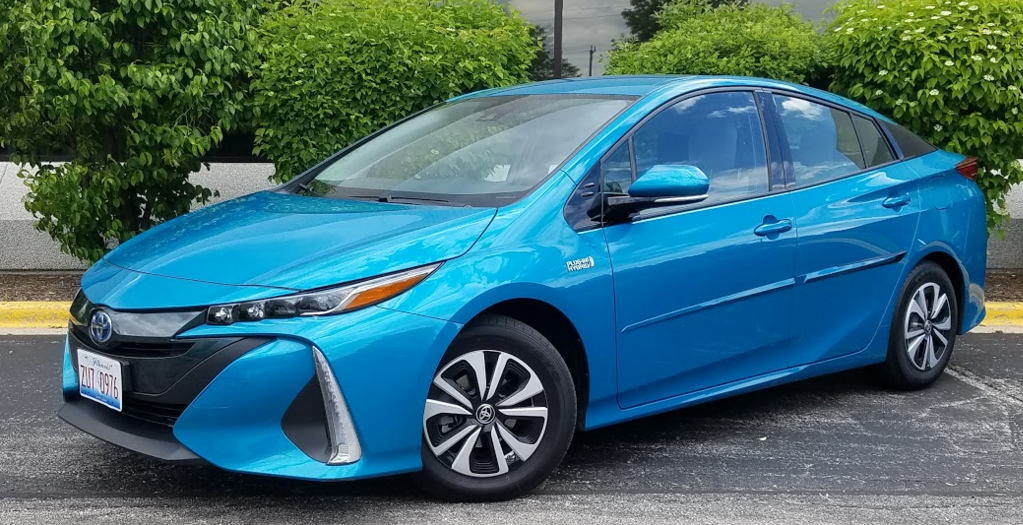
 2017 Toyota Prius Prime Plus
2017 Toyota Prius Prime Plus
Class: Compact Car
Miles driven: 1236
Fuel used: 22.2 gallons
Real-world fuel economy: 55.7 mpg
Driving mix: 25% city, 75% highway
| CG Report Card | |
|---|---|
| Room and Comfort | B- |
| Power and Performance | C+ |
| Fit and Finish | B- |
| Fuel Economy | A+ |
| Value | A |
| Report-card grades are derived from a consensus of test-driver evaluations. All grades are versus other vehicles in the same class. Value grade is for specific trim level evaluated, and may not reflect Consumer Guide's impressions of the entire model lineup. | |
| Big & Tall Comfort | |
| Big Guy | B- |
| Tall Guy | B |
| Big & Tall comfort ratings are for front seats only. "Big" rating based on male tester weighing approximately 350 pounds, "Tall" rating based on 6'6"-tall male tester. | |
EPA-estimated fuel economy: 133 MPGe (combined)
Base price: $27,100 (not including $885 destination charge)
Options on test vehicle: Floor and cargo mats ($224), bodyside moldings ($209)
Price as tested: $28,418
Quick Hits
The great: Electric-only drive capability, fuel economy
The good: Control layout, visibility
The not so good: Some switches and plugs awkwardly placed
Check out our Compact Car Best Buys
Rick Cotta
Although the first-generation Toyota Prius Plug-in Hybrid didn’t fare all that well, this second-generation design — which arrived for 2017 — holds some real promise.
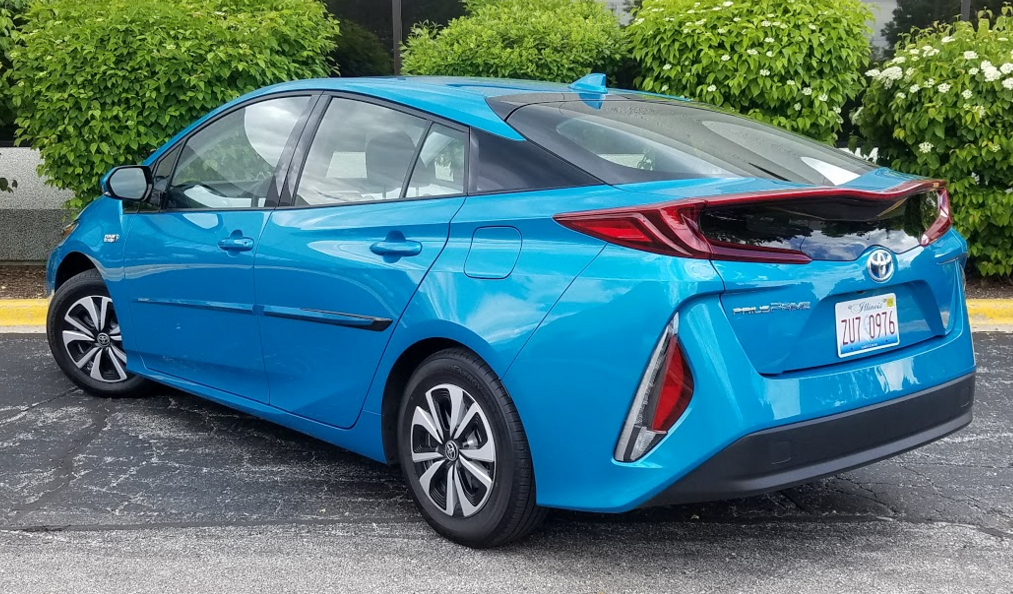
In virtually all their forms, plug-in hybrids are much like regular hybrids, except the battery is larger, allowing the vehicle to travel a ways on electric power alone before reverting to “normal” hybrid operation. And though you don’t need to, it’s most efficient to plug the car into a standard electric outlet to recharge that battery; otherwise, it’s recharged during normal driving, but that may not be enough to give it any appreciable “all electric” range.
Since Toyota’s name game can be confusing, let’s start with getting the models straight. The “regular” Toyota Prius — which has been around for ages and has long been the best-selling hybrid in the country — was joined a few years back by a plug-in version. As mentioned, the main claim to fame of most plug-in hybrids is that they can run for a ways on electric power alone. Trouble was (at least for that first Prius Plug-in), that “ways” was only about 11 miles, and for that a buyer sacrificed some space and quite a bit of money for the relatively short range on electric power alone.
But the current Prius plug-in — newly called the Prius Prime — offers a much more viable package.
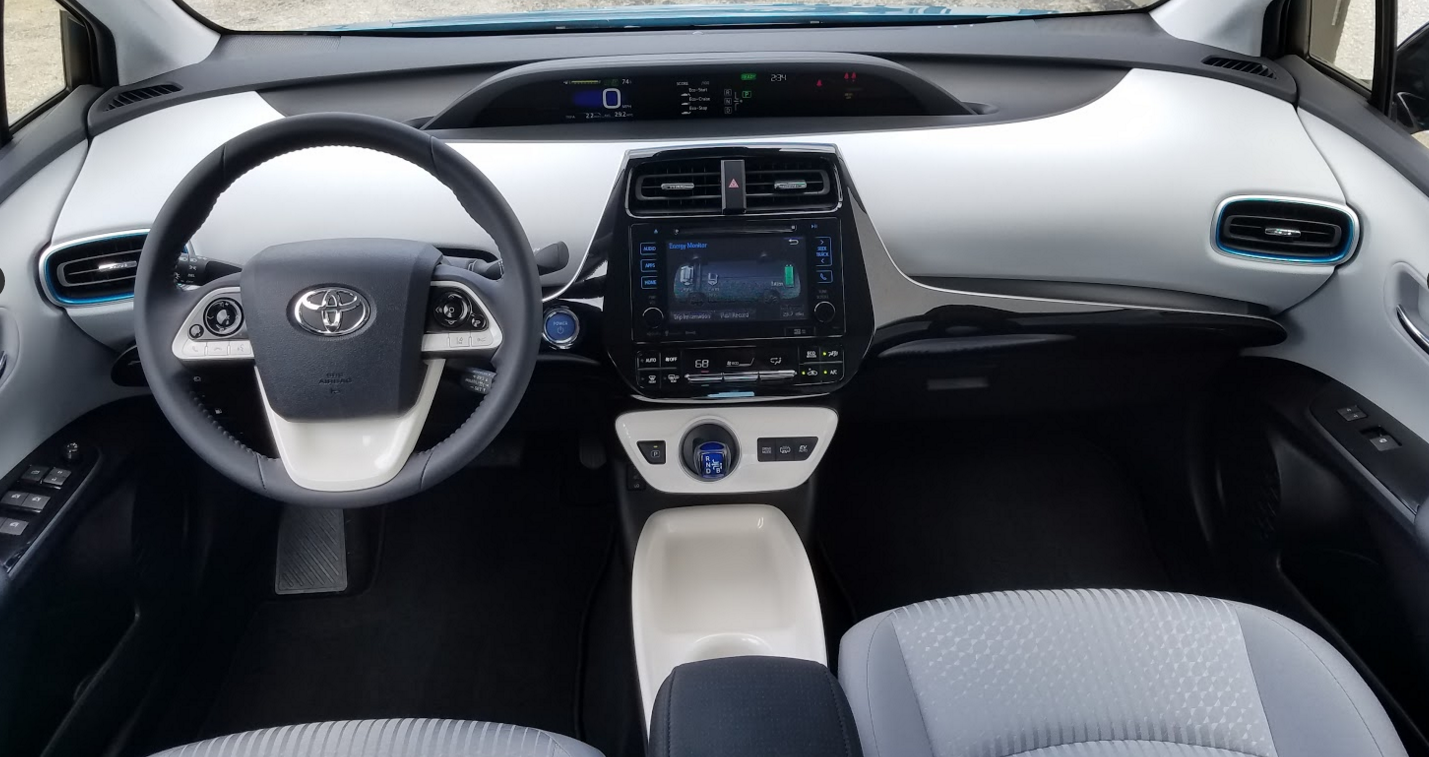
First, estimated all-electric range has more than doubled, from 11 miles to 25. Also, if the buyer is eligible for the $4500 federal tax credit (based on the Prime’s 8.8 kilowatt-hour battery), the base Prius Prime Plus — which is what we tested — actually ends up costing about $2000 less than the base non-plug-in Prius. Furthermore, the Prime is more powerful than its Prius sibling, Toyota saying it’s about a second quicker from 0-60 mph.
First Spin: 2017 Chrysler Pacifica (plug-in) Hybrid
Yet the picture isn’t entirely rosy. Although the Prius Prime is four inches longer than the standard Prius (to make room for the larger battery), it also has a raised cargo floor (for the same reason) that reduces the height of the cargo area and makes it more difficult to load bulky items. And while the rear seat backs still fold, they rest about 5 inches below the level of the cargo floor, though this might not be a real hindrance. There’s also some hidden storage beneath the raised floor, so that’s a plus.
We covered the “stats” of the Prius Prime in our First Spin report, so here are some elements that stood out after putting more than 1200 miles on a locally tested base model.
- When swung to the side, the sun visor (which doesn’t extend) barely covers half the side window, which allows a lot of sunlight through when driving north or south when the sun is low.
- The Aux, USB, and 12-volt plugs are rather inconveniently placed at the rear of the console.
- The seat-heater switches are likewise rather inconveniently located under the center of the dashboard.
- It would have been nice if the console tray were padded, as stuff put there rattles around on the hard surface.
But on the good side …
- I managed to go 26.9 miles in 50/50 city/highway driving on all-electric power before the gas engine kicked in, and a co-worker went 31 miles in all city driving, both besting Toyota’s 25-mile claim.
- Our test car averaged a respectable 10.0 seconds 0-60, with the usual quick throttle response of an electric car.
- Our overall fuel economy of 55.7 mpg was lower than what most would probably experience, as almost 3/4 of it was spent in highway driving, which is less efficient in a hybrid vehicle than city driving.
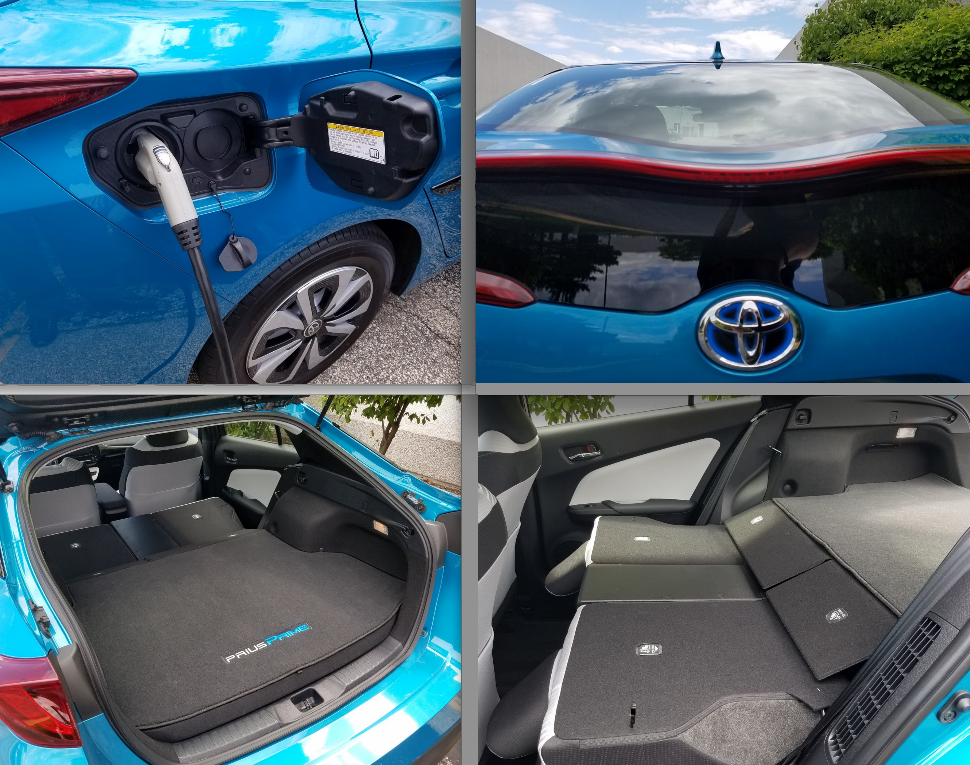
One more thing. Subtracting the $4500 federal tax credit from our test car’s $28,418 bottom line leaves a net price of $23,918. Seeing as even this base-model Prius Prime comes standard with such features as a navigation system, heated front seats and mirrors, keyless access and starting, and the Toyota Safety Sense suite of high-tech safety features (forward collision warning with pedestrian detection, lane-departure warning and mitigation, automatic high beams, and adaptive cruise control), it would be a compact-car bargain even if it didn’t offer exceptional hybrid fuel economy and electric-only drive capability.
And that’s long been our stance even for the regular Prius. So if you have a place to plug in the Prime — and particularly if your day-to-day commute is less than about 30 miles — this new plug-in version of the Prius makes for an exceptionally inviting package.
News about the 2018 Honda Clarity Plug-in Hybrid
News about the 2017 Kia Optima Plug-in Hybrid
News about the 2017 Hyundai Ioniq Plug-in Hybrid
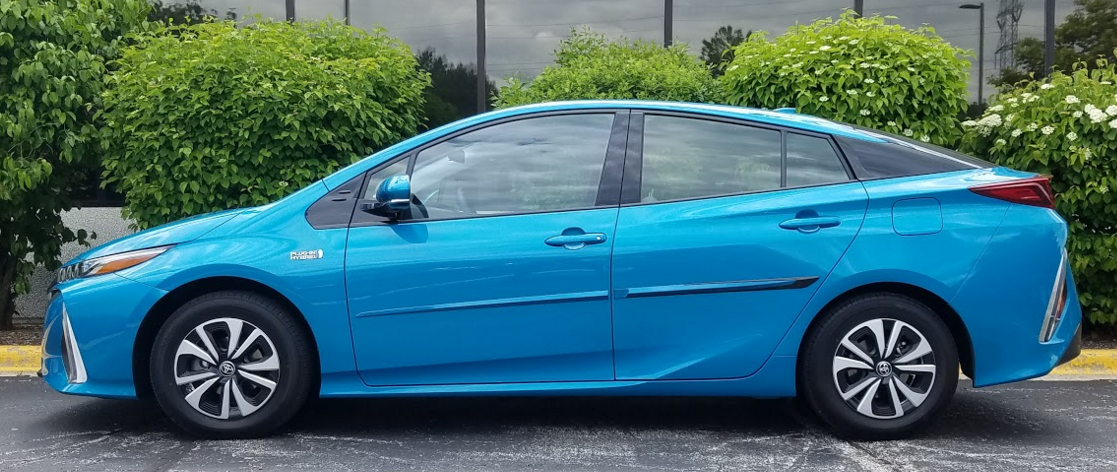
How to Save Gas: City and Suburbs Edition

